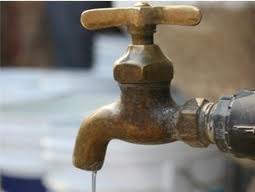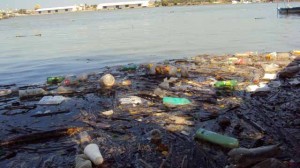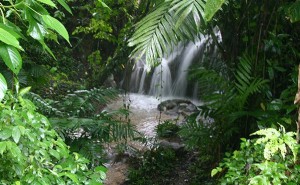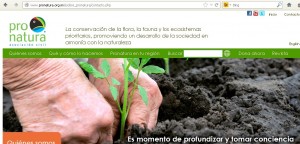Posts Tagged water issues
Learning our way through Addis
Posted by Katie Petitt in Ethiopia, Katie Petitt on June 25, 2014

Phoenix, Pushpa and I at the Bete Maryam Mausoleum

Driving around the streets of Addis Ababa
Our director, Pushpa, came in Saturday night. Since then, the 3 of us have been on the move. We have made our way though restaurants, markets, hotel lobbies, parks, squares and mausoleums. We have sat in UN offices, NGO offices, university offices and in plenty of traffic. We are mastering this ever growing city and it is only week 2! Mastering may be a strong word, but I am proud to announce Phoenix is the minibus master and that has to count for something (see his blog).
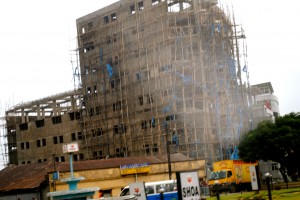
Countless of these buildings are being constructed as the city grows and expands.
Really, I wish you could see this city. It is beautiful. If you talk to Pushpa and Phoenix, they will tell you I say “wow” almost every 20 minutes. I am in awe of the old architecture, the food, the people and the colors. The new architecture is equally impressive because there is just so much of it. Today we were riding around and to our right we saw at least 10 huge buildings under construction. Addis Ababa is a rapidly developing city and I have had several native Addis dwellers say to me that they drive around and always find new areas of the city because it is constantly growing. I think we, like these locals, will continue to learn and explore the city and keep finding new things.

Breakfast, coffee and a shoeshine at these street-side vendors

The usual bustle outside of St. Stephen’s Church
This investigation is already underway. We have made so many contacts these last few days and we will be doing quite a few interviews around the city and throughout the country. Our first one this week will be on Thursday. We hope to take pictures of people lining up for water because they have no access in their homes. This is in the far northern part of the city, and it is not an isolated case. We are learning more and more about how the rapid development of this expanding city is affecting the water supply.We have even heard of people who have been living for 5 years without water during the daytime. Water issues, it seems, are prevalent not only in the rural areas or drylands, but right here in the water-rich capital.
We are slowly learning our surroundings and about the water issues Addis is facing. Development is playing a role in this issue, yet the people seem hopeful for the future. In our upcoming interviews we want to look at how the water situation now will play a role in that future.

Looking out at the city from Meskel Square
Mexico, the environment and water issues
Posted by Ainhoa Martinez in Ainhoa Martinez, Mexico on June 12, 2014
The Mexican environment is a gift from the Mother Nature. The view that the environment provide is infinite, from the snow-capped volcanoes in the southern Valley of Mexico, to the full of cactus deserts commonly seen on Mexican movies, the wild jungles and the heavenly coast areas.
Respecting environmental issues, although Mexico is an oil producer and a developing country, it might be surprising that Local Government has manifest its aim to reduce the greenhouse gas emissions and had the objective to reduce them to half by 2050. Will they achieve that objective? These days the Energetic Reform is being discussed in a Commission at the Mexican Senate.
The geographical location of the country makes Mexico vulnerable to global warming and these last years, events such as hurricanes, droughts and floods may be attributed to the increase of the sea temperatures.
In addition, while its oil production decreases, Mexico discovers its potential for renewable energy. One-sixth part of its electricity comes from hydroelectric dams and also seeks foreign investment to develop solar energy.
Regarding water conflicts, the South territories of Mexico hold the 70% of the water, however, the North and the Central territories hold the 75% of the population. In total, about 11 million Mexicans (the 10% of the population) have no running water at home, and 15 million are living without sewage systems.
The aquifers in the North and Center are under increasing pressure from the cities, industry and agriculture. The North has suffered several droughts in the last two decades, which had affected agricultural production. And Mexico City turned to water shortages in 2009 due to a shortage record.
A lot of water is wasted. Because of leaks, about the half of the water supplies of the cities is lost. And about the half of the 75% of the country’s supply for agriculture is not used productively.
About the 80% of sewage water is not treated, which together with the waters of agrochemical runoff and large amounts of waste discharged into rivers and lakes, causes the contamination of the three quarters of the surface waters of Mexico (more or less).
Much of the sewage water from Mexico City is poured into the Panuco River, which empties into the Gulf of Mexico in Tampico. The Lerma River, which also caters to the capital, receives sewage water and industrial fluids in many other cities on their way to Lake Chapala, the largest natural lake in the country.
Jungles are also important as their conservation is key not only to fight against global warming, but also because they often are the source of water supplies.
The problems of the Federal District in terms of water supply, wastewater treatment, overcrowding and traffic pollution are reflected on a smaller scale in all rapidly growing cities.
Tourism development involves large-scale problems and threatens fragile ecosystems, especially in Baja California and the Caribbean coast. Due to uncontrolled urban development, new buildings threaten to deplete water resources, increase pollution and destroy wetlands.
Nevertheless, environmental awareness is growing stronger, but still there is no movement on a large scale, but you can find local organizations such as Pronatura, which allocates 100 million MXN to projects regarding climate change, priority species and land conservation.

